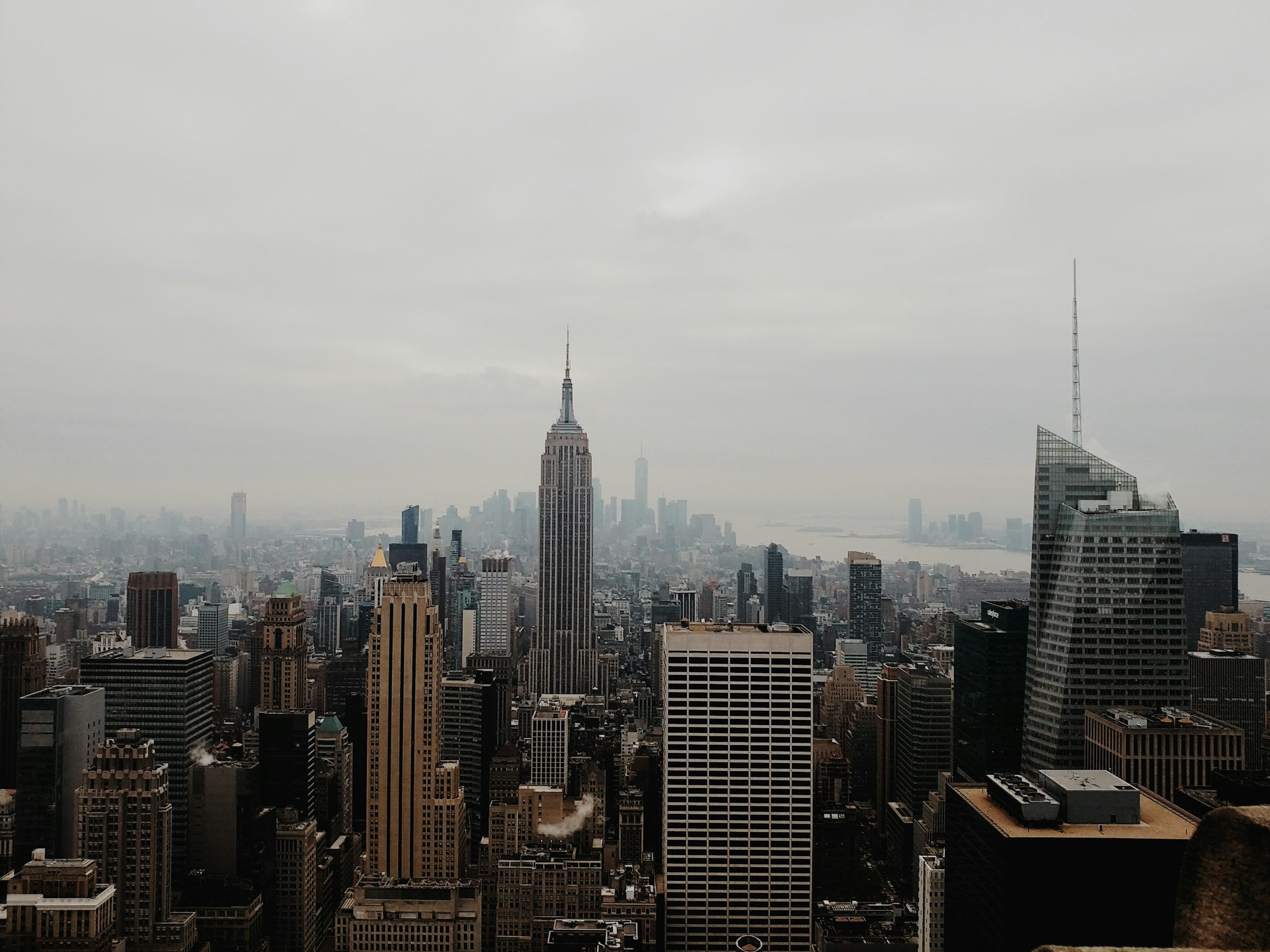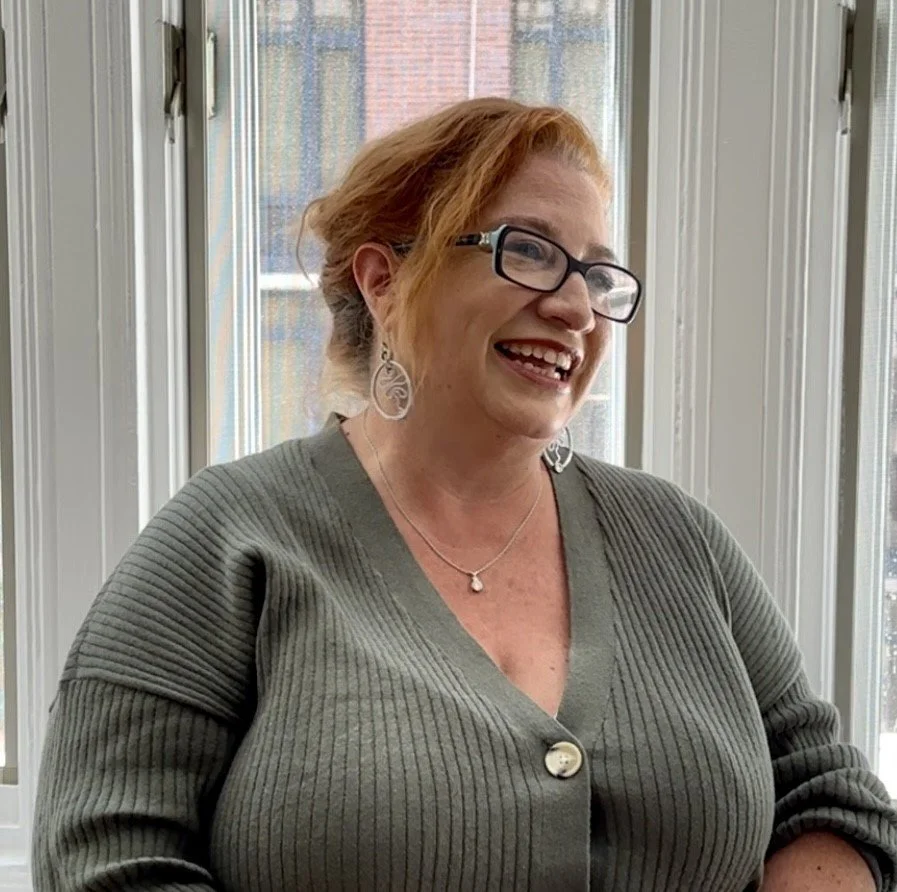
Our History
Our congregation has been active since 1825.
On this page, learn about our journey.
March 19, 1825: The Second Congregational Society is founded on Mercer Street at Prince Street (image to the left). First Unitarian - now All Soul’s - was on Canal street, but families were moving “uptown”, thus justifying a second church. “Unitarian” was not included in the name originally so as to be welcoming to Trinitarians seeking a liberal church.
1826: Dedication of first church building. Notable theologian and Transcendentalist William Ellery Channing preaches.
November 26, 1837: A fire broke out in the growing and socially active church. Dr. Orville Dewey, considered one of the most eminent preachers and theologians of the time, was the minister. The church burned to the ground.
1839: A new church was built and dedicated on Broadway with the new name of The Church of the Messiah, a popular name for Unitarian churches at the time.
1864: The congregation sold the property and purchased space on the corner of 34th and Park, at the top of Murray Hill. Families were moving further north. Churches were growing more grand in style. There was talk of this NYC church becoming a Unitarian Cathedral and it was built to be just that. The new building was formally dedicated on April 2, 1868. It cost $300,000 to build, about $6.5 million in 2023.
1906: John Haynes Holmes (image below) called as minister. Dr. Minor Savage, after 10 years in the pulpit, got sick and retired very quickly. The church went looking for someone they thought could live up to their very proud history of great orators. Holmes was 27 when he was installed in the winter of 1907. Read more about this significant social activist at the Dictionary of Unitarian & Universalist Biography.
1909: John Haynes Holmes (image to the right) accepts an invitation from W.E.B. DuBois to join a small circle of people to found the National Association for the Advancement of Colored People.
1910: First Black congregant, Mr. Horace Dudley, joins the church. Rev. Holmes invites him to become an usher. Mr. Dudley suggests that if he stands outside on the corner of 34th and Park beckoning people to church, white people won’t come in. Rev. Holmes assures him, “We don’t want those white people”. This is the beginning of the very unusual multi-racial, multi-cultural nature of this church.
1919: Congregation renames itself the Community Church of New York as part of a massive reform. Rev. Holmes challenged all the norms of church life and inspired a major transformation that later became the norm in many progressive churches. They removed pew ownership (addressing nearly immovable class issues), gave the minister Freedom of the Pulpit, left the Unitarian denomination, and joined the Community Church movement, soon to become the largest Community Church in the country, ultimately logging in with 1800 members. The Church also famously declared themselves pacifists, resistant to war and violence in all its forms.
1920: John Haynes Holmes helps found the American Civil Liberties Union.
1931: Drs. Abraham and Hannah Stone and Dr. Lena Levine establish the first marriage counseling service under medical direction in the United States at the Community Church in New York.
1931: John Haynes Holmes meets Mohandas Gandhi in London. Learn more about the relationship between these two historical figures in this documentary at the Library of Congress. The image to the left depicts Gandhi with John Haynes Holmes in New Delhi, October 12, 1947 and was taken by John Haynes Holmes’s son, Roger W. Holmes. Courtesy of the Harvard Square Library.
October, 1944: Revs. John Haynes Holmes and Donald Harrington along with their wives joined the Harlem Unitarian Church. This was an act of support and an attempt to open the church as a multi-racial congregation as they struggled to gain footing in Unitarian circles. There was an ongoing relationship until the church closed.
Late 1940s: Current building on 35th St constructed.
1948: Current church building on 35th St dedicated. Dedication of new church is attended by Jawarhal Nehru, Governor Dewey, both New York senators, a Supreme Court Jusice and Rabbi Stephen Wise, John Haynes Holmes' great friend. Reverend Donald Harrington preaches that the new building will be
“a forum for the airing of great public issues in debate on Sunday evenings, a place where great music might be heard...and where every weekday night great causes of the age, like those of civil liberties, racial equality, world peace, and world government might rally the public to their banners."
1949: John Haynes Holmes officially retired, succeeded by Donald Szantho Harrington as Senior Minister of Community Church of New York. He became Minister Emeritus and continued to preach until his death decades later. The two men are pictured at right, Holmes to the left and Harrington to the right.
1950: Reverend Maurice Dawkins, Minister for Education, becomes first Black member of the CCNY ministerial team.
1953: Reverend Harrington co-founds the American Committee on Africa, headquartered at CCNY.
1954: New organ dedicated at Community Church of New York.
1959: Community Church welcomes the Metropolitan Synagogue of NY, a Reform Jewish congregation into our space.
1962: UU United Nations Office establishes workspace at CCNY building.
1962: 300 Community Church of New York members take part in Dr King's March on Washington
1962: Community Church of New York hosts a debate between Malcolm X and Bayard Rustin. Click the screen to the left to watch a clip of this debate! Read a contemporary review of the debate in the Village Voice.
1964: Community Church Senior Minister John Haynes Holmes dies. Read his obituary in the New York Times. Reverend Dr. Haynes Holmes' ashes are interred in the Hall of Worship at CCNY.
1964: Community Church Senior Minister Donald S. Harrington is arrested alongside Bayard Rustin while picketing opening day of the New York World’s Fair with CORE (Congress of Racial Equality). The protests’ demands included shutting down all World’s Fair construction sites until work forces were fully integrated, immediate rent strikes throughout slum areas, an immediate timetable for total desegregation of all schools and a civilian‐selected review board on complaints of police brutality.
1965: UU United Nations Office becomes a funded program of the Unitarian-Universalist Association.
1965: Reverend Harrington, along with other liberal religious leaders, spends 17 days in Alabama supporting the Selma marchers. Read more about Unitarian-Universalism's engagement with the events in Selma here.
1966: The Community Gallery (later known as Gallery35) holds its first exhibition on the CCNY campus at 35th St.
1970s: American Committee on Africa makes Community Church their home-base until their leader Nelson Mandela is released from prison.
1978: Dianne Arawaka becomes first woman member of the ministerial team.
1982: Donald Harrington stands down as Senior Minister and the congregation calls his successor, Reverend Bruce Southworth (pictured to the left).
1983: Community Church establishes its first shelter for unhoused men in response to an appeal for help from the city as it faced a growing housing crisis. CCNY was one of the first city congregations to join the effort.
Early 1980s: Church offers office space to fledgling NGO, the African Services Committee, dedicated to helping recently arrived African refugees with a special focus on people living with HIV/AIDS. ASC is still active today, now based in the Bronx.
1980s: Community Church's activism includes the continuing mobilization of U.S. pressure on South Africa through the disinvestment movement.
1984: Marjorie Bowens-Wheatley hired as first Black woman member of the ministerial team.
1985: Reverend Southworth and several CCNY members arrested at civil disobedience protests in New York outside the South African UN mission.
1988: Community Church hangs banners of the world’s major religions in the Hall of Worship.
1990: Just three months after his release from prison, Nelson Mandela makes his first visit to the United States. He speaks at Community Church (pictured to the right) to thank American anti-apartheid activists for their support. The briefing was attended by nearly 100 activists from 49 cities in 29 states. Read more here.
1994: Reverend Southworth serves as election monitor in Soweto, South Africa.
1997: CCNY recognized as an LGBT Welcoming Congregation by the Unitarian-Universalist Association.
1998: CCNY witnesses its first same-sex commitment ceremony, of members Gary Jacinto and Peter Robinson.
1999: CCNY member and Sunday School teacher Dumisani Kumalo (pictured to the left) becomes South Africa’s ambassador to the UN. Kumalo had led the African National Congress’s sanctions campaign.
1999/2000: CCNY plays a leading role in the creation of the Interfaith Coalition Against Police Brutality, to seek to address racist “stop and frisk” practices by NYPD.
2009: CCNY joins NYC New Sanctuary Coalition, a coalition of faith-based and other organizations dedicated to supporting immigrants. The church was an active member until the organization’s closing in 2021.
2017: Reverend Bruce Southworth retires from the position of Senior Minister, becoming Minister Emeritus.
2018: Community Church's Black Lives Matter banner is installed outside the church.
2019: Community Church calls Reverend Peggy Clarke (pictured to the right), a climate justice activist and its first woman Senior Minister.
2020: CCNY moves worship and programs online in response to the COVID-19 pandemic. No staff are laid off and programs continue online throughout the week.
2021: Rev. Peggy Clarke is arrested in front of the White House protesting the drilling for oil on federal land. Later that year, she attended the United Nations Conference of Parties for the second time, first in Paris (2015) and this year in Glasgow.
2022:
The State Supreme Court approves the sale of 5 Community Church buildings. The congregation worships at a local Episcopal church while seeking a new home.
Community Church sponsors a trip to Jordan as a way of starting an ongoing conversation about the relationship between the US and the Middle East.
Community Church hires an Old Catholic priest, creating an unusual multi-faith ministry team.









